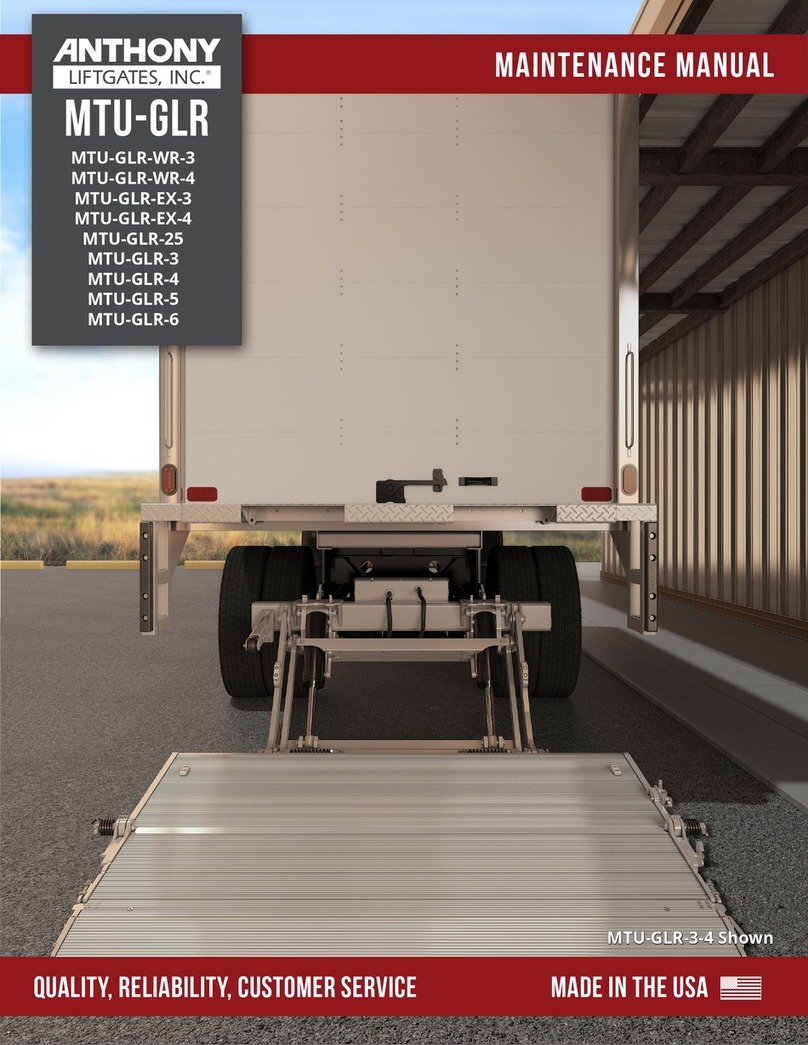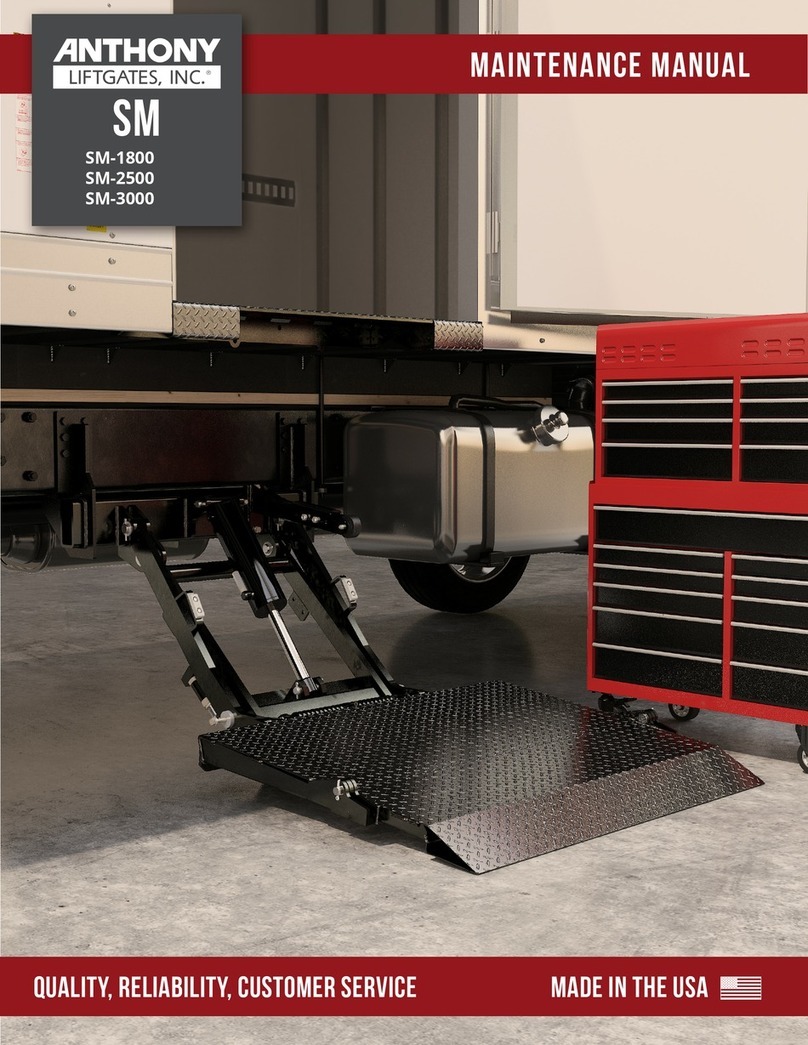
CAUTION Anthony Liftgates
recommends not
riding the liftgate;
however, if the operation requires it, make sure your
footing is stable before raising or lowering the platform.
Always stand away from the edge. When on the ground,
always stand clear of the liftgate when it is operating.
Do not attempt to maintain the liftgate
under the influence of drugs or alcohol.
Consult your doctor before using the
liftgate while taking prescription medications.
To prevent personal injury, clean up any
spilled fluids immediately. To avoid
tripping, do not leave tools or components
laying around in the work area.
Failure to prevent the truck from moving
during the maintenance of the liftgate
could result in a serious crushing injury.
Always use/set the truck’s parking brake
and remove the ignition key before
servicing the liftgate. Failure to follow this
recommendation can result in injury.
Do not place hands or feet in pinch points.
Do not place your feet under the liftgate or
between the platform and floor extension.
To prevent injury, the liftgate and its related
components should only be maintained by a
qualified installer having knowledge and skill in
using a lifting device, a cutting torch, and welding
equipment.
N
I
NG
AR To prevent possible injuries due to improper
operation, make sure all decals are attached to
the liftgate and/or truck and are legible at all
times.
2.3.2 Equipment / Tools / Parts
CAUTION Do not operate this unit if
it is damaged. If you
believe the unit has a
defect, which could cause it to work improperly, you
should immediately stop and remedy the problem
before continuing.
Make sure the liftgate or truck will not be
damaged or made unsafe by the maintenance or
use of the liftgate.
Never secure the power cable to anything which
allows it to contact sharp edges, other wiring,
fuel tank, fuel lines, brake lines, air lines, exhaust
system, or any other object that could cause the power
cable to wear or be damaged. A cut battery cable can
cause sparks and/or component damage resulting in
loss of vehicle control, serious injury, or even death.
CAUTION OEM
If replacement parts are
necessary, genuine factory
OEM replacement parts
must be used to restore the liftgate to the original
specifications. Anthony Liftgates will not accept
responsibility for damages as a result of using
unapproved parts. If non-OEM replacement parts are
used, the warranty will be voided.
2.3.3 Battery / Fuel Tank Safety
WARNING To prevent
serious bodily
injury, keep
sparks, lighted matches, and open flames away from
the top of the battery because battery gas can explode.
Always follow all the manufacturers’ safety
recommendations when working around the truck’s
battery.
Take precautions to avoid sparks coming into
contact with the truck’s fuel tank, brake lines, or
other flammable components. Sparks can cause
an explosion of combustible materials, resulting in
serious injury or death.
2.3.4 Cutting Torch / Welding Safety
WARNING Take precautions to avoid
sparks from contacting the
truck’s fuel tank, brake
lines, or other flammable components. Sparks can
ignite combustible materials, resulting in serious injury
or death.
Always weld or use a cutting torch
in a well-ventilated area and, if in an
enclosed area, vent the fumes to
the outside. Breathing welding smoke and paint fumes
can cause serious injury.
Always follow all State and Federal health and
safety laws and/or local regulations when using an
arc welder, mig welder, or cutting torch. Also,
follow all manufacturers’ safety guidelines. If other people
are present during the installation of the liftgate, make
sure the assembly area is shielded from their view.
To avoid eye injury during welding, always wear
a welding helmet with the proper lens to protect
your eyes.
To avoid eye injury while using a cutting torch,
always use eye protection with the proper lens to
protect your eyes.
SAFETY
INSTRUCTIONS
Do not modify safety
devices. Do not weld
on the liftgate
assembly, except the adapter frame tube. Unauthorized
modifications may impair its function and safety.
Make sure all parts are in good working condition
and properly installed. Replace any damaged
parts immediately.




































